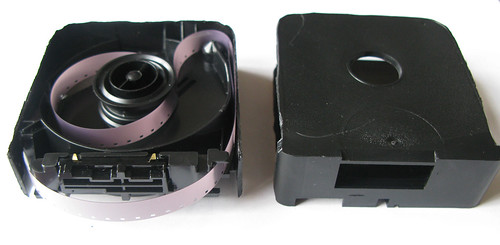05
01/14
12:22
Portable Media: I carry therefore I produce
Portable Media: 10 January-7 March at the Humboldt-Universität zu Berlin. Georgenstraße 47. EG. Atrium. 10117 Berlin.
This exhibition shows some of the results of the research project DIY and portable media for moving image production. A series of cameras and storage units, a historical examination of portable media, and three video productions are exhibited. Three presentations will take place during the exhibition. Two special guests, Prof. Dr. Wolfgang Schäffner and Prof. Dr. Frieder Nake, will discuss about media and algorithms. I will talk about the historical development of physical containers for moving images. Portable media emerge from the physical reduction of media supports and the compression of the storage formats into small machines and units. Focusing on the formats and storage units of small gauge film, consumer analogue video, and camera phones, this exhibition highlights the expansion of media carried everywhere and used at any moment.
Programme:
10 Jan 18:00 Opening
10 Jan 18:30 Wolfgang Schäffner. What is a Video? Media Revolutions of the Moving Image
3 Feb 18:30 Frieder Nake. On the Move – Image Algorithm
14 Feb 18:30 Ricardo Cedeño Montaña. Portable Storage: Chargers, Cartridges, Cassettes
17, 24, and 31 Jan 18:00 screening of Super 8 films.






